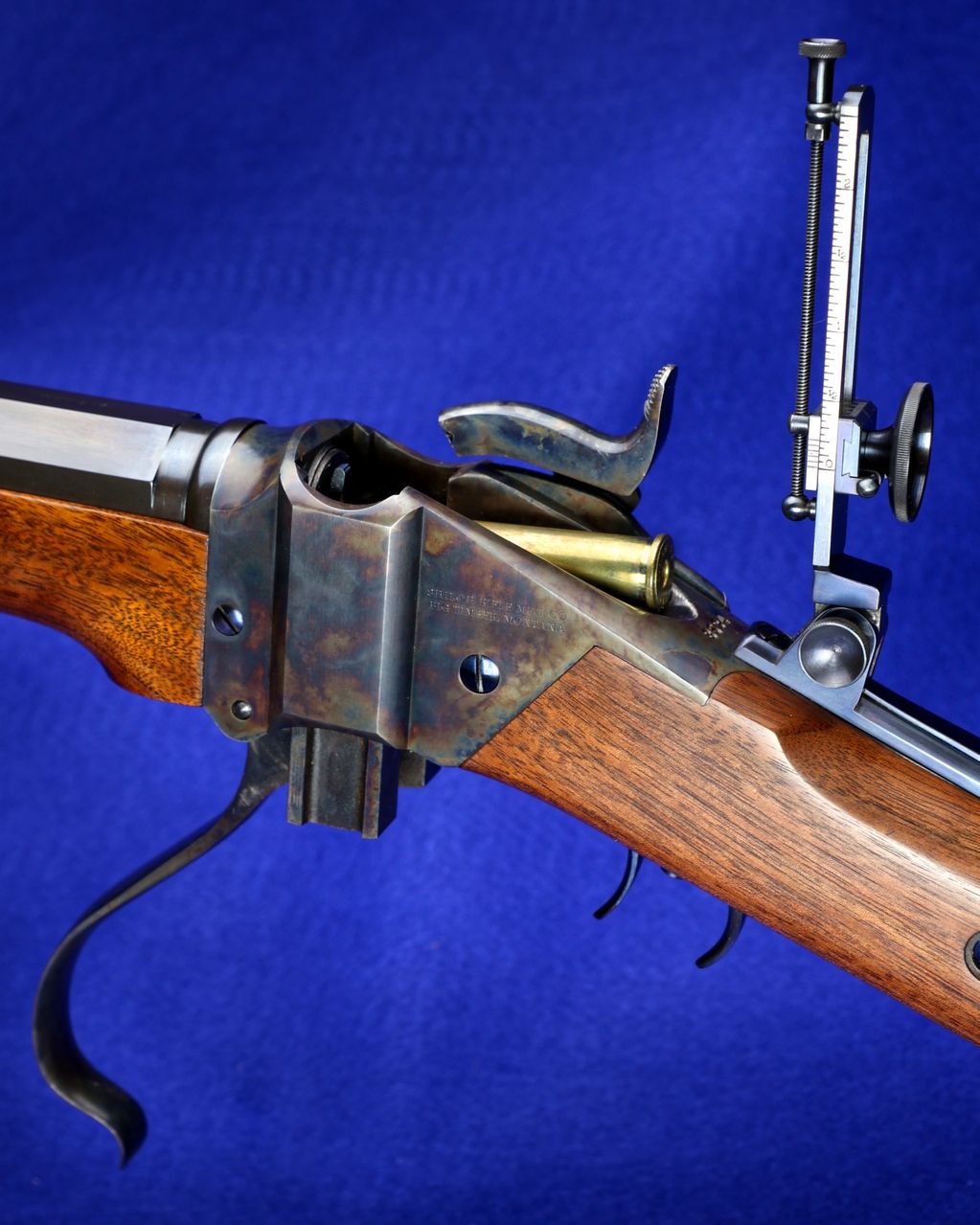The shiloh sharps Hartford model .44-77

Standing alone as the arm most responsible for the conversion of the North American buffalo herds into fertilizer, fur coats, industrial equipment and occasionally food is the Sharps rifle. Other arms helped, of course, but the Sharps sidehammer became the symbol of not only the destruction of the buffalo, but the end of the Indian’s way of life, the opening of the prairie for farmers and the rise

The 1874 Sharps had a large loading trough capable of accepting the biggest rounds necessary for American hunting. The lever doubles as triggerguard and provides power to extract cases. The barrel with its “Hartford Collar,” receiver and stock have many subtle sculpting cues to lighten weight and improve handling that keep the gun interesting to look at when you’re not busy behind the trigger.

The Riflesmith rear sight came in lovely peacock blue and shines like a jewel atop the rifle (this one was rusty and had to be refinished—be sure to treat your sight as you would your rifle and oil it!). The sight features just a bit of windage—enough for short-range target work. Both elevation and windage work smoothly. The only drawback to this particular style is the base sits so high, the bor

The spirit level front sight is from Smith Enterprises (now discontinued) and similar to the original Sharps Globe sights that used a spring on top to hold the insert in place. The globe insert subtends an 8-inch bull well at 200 yards, but isn’t high enough and shots strike 10+ inches high. The math says a higher Montana Vintage Arms Sharps Windgauge should correct the problem. However, the Smi

Shiloh offers the early and late Sharps barrel sights, and their late style (left) that came on this one has a staff with graduations and the honkin’ big buckhorn of the Bridgeport era. It wanders into the sight picture when windage is applied to the tang. After scrounging a discontinued Smith Enterprises sight with similar buckhorn, John King machined it into the early style Hartford-era sight.

The .44-77 had a reputation for accuracy, and this one lives up to it quite well. Four shots are usually tight with one wide one even after wiping the bore the same way between shots. The bottom group is 1-3/8 inches and the top one 1-3/4. Since there appears to be a pattern, it’s possibly attributable to a loose nut behind the trigger. It’s fun to visualize being on the Kansas prairie with the
Some of the firearm photos are © FMG Publications, since they were taken by me to illustrate stories written for GUNS Magazine. Everything else is ©2025 by Jeff John. All rights reserved, whether my copyright or FMG's!
Powered by GoDaddy